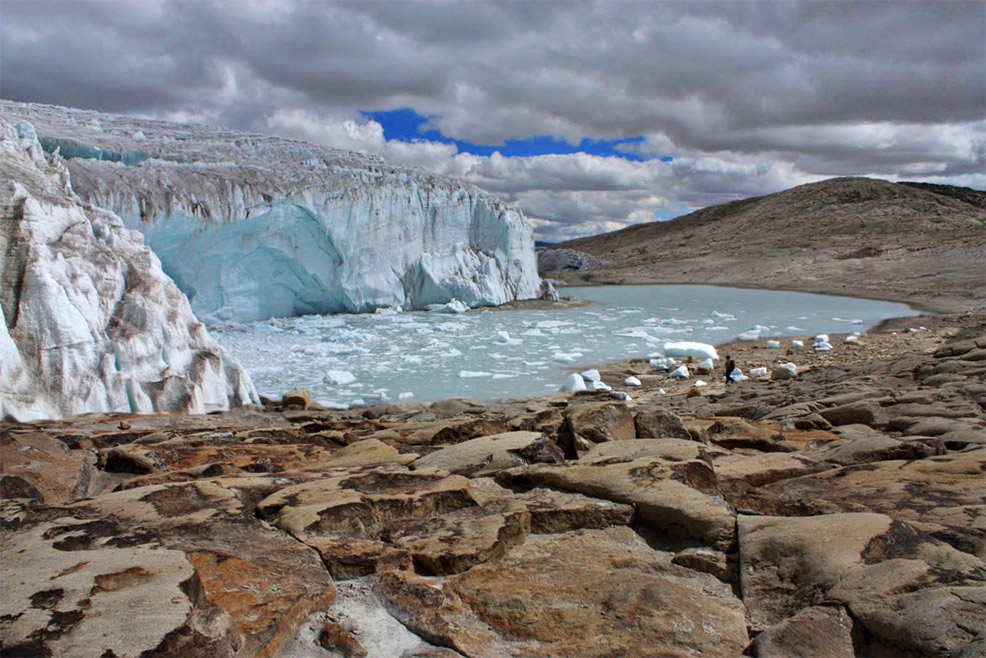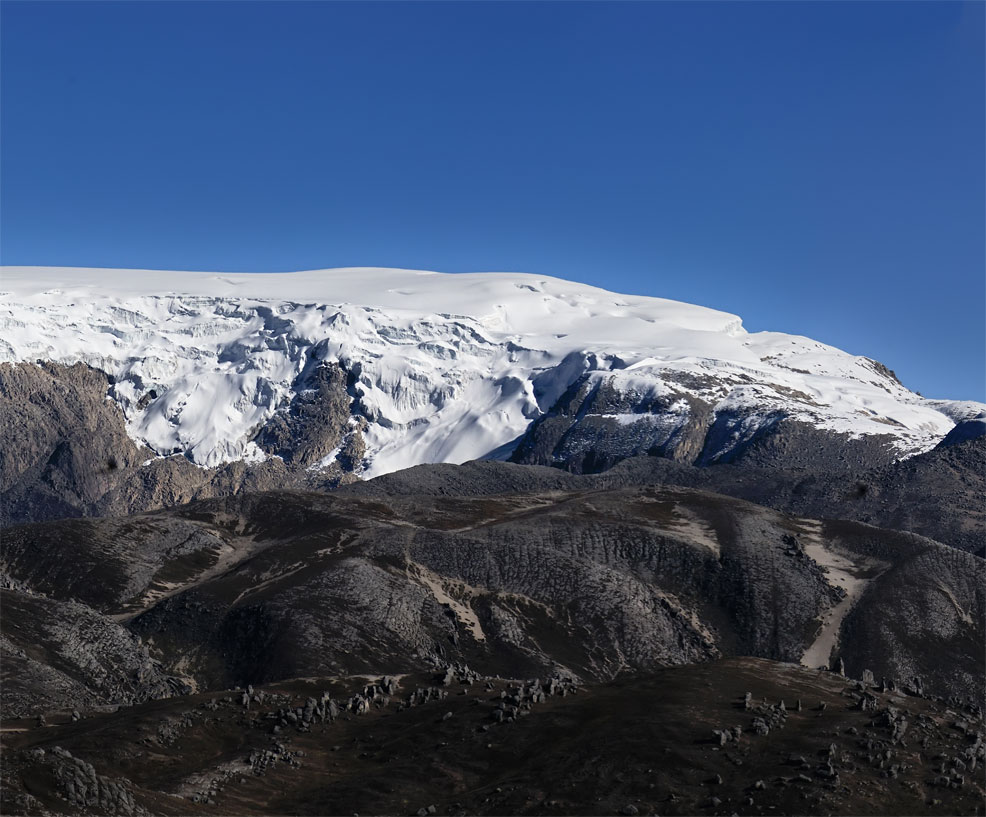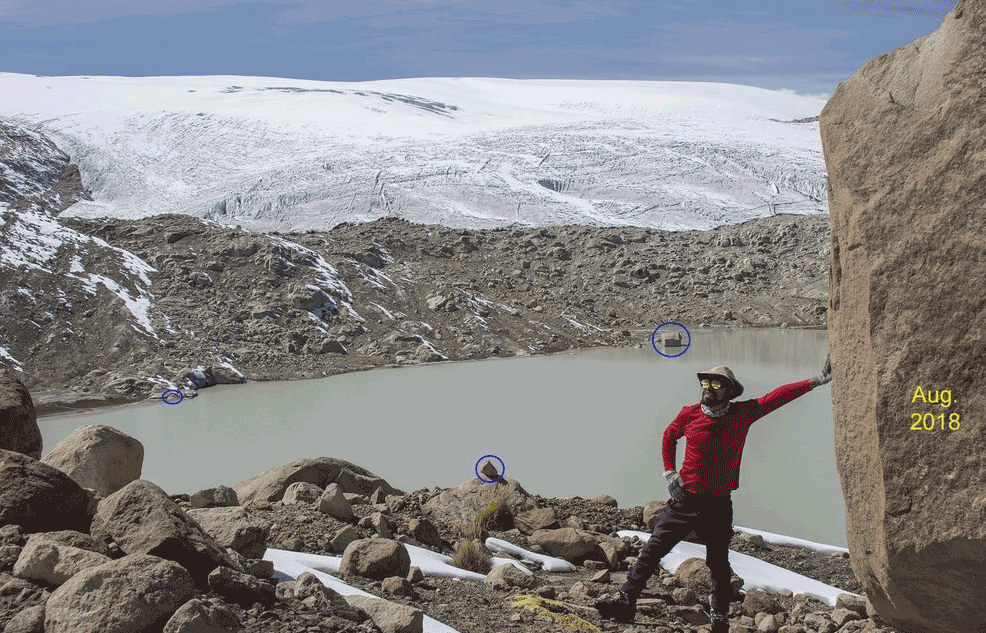
27th October 2018 Peruvian glacier melting "irreversible" by mid-2050s A study by the University at Albany forecasts that Peru's Quelccaya ice cap will reach a state of irreversible retreat by the mid-2050s, if current warming trends continue.
Peru is home to the largest glaciated areas in the tropics. One of these ice caps – Quelccaya – covers part of the Andes Mountains at an average altitude of approximately 5.5 kilometres (3.4 miles). Like other glaciers in the region, Quelccaya is a vital resource for the millions of people who rely on its melting ice for agriculture, drinking water, electricity production and sanitation. Peru generates about 54% of its electricity from hydropower. Since the early 20th century, global average temperatures have been increasing significantly. This has coincided with an acceleration in the rate of ice loss around the planet and today, glaciers all over the world are melting at unprecedented speed. Quelccaya is no exception. Its total area has already shrunk by 31% in the last 30 years. A new study, published this week in the journal Scientific Reports, estimates that this decline could become irreversible during the mid-21st century. By 2055, the mighty glacier will be losing more mass due to melting than is replenished by snowfall even at its highest elevation.
The research was led by University at Albany climate scientist Mathias Vuille and recent Ph.D. graduate Christian Yarleque, both from the University's Department of Atmospheric and Environmental Sciences. Together with colleagues, they studied air temperatures in the region and used computer models to simulate the most likely future outcome. The central Andes – the location of Quelccaya – is predicted to see temperature increases ranging from 3 to 5°C (5.4 to 9°F) by the end of the 21st century, depending on the emission scenario. "We divide glaciers into two parts," explains Professor Vuille, who has published more than 100 peer-reviewed articles on climate change and is a specialist in glacier retreat within the tropical Andes. "There is the higher part, where the glacier gains its mass through snow accumulation – and then there is the melting at the bottom. The equilibrium line is the boundary between the two zones. Our projections show that Quelccaya's equilibrium line will be located above the summit from the mid-2050s onwards, leading to its eventual complete disappearance. If we continue to burn fossil fuels at current rates, we will soon be locked into an irreversible loss." "We often think about climate change as a problem that will impact future generations," Yarleque said. "In this case, we are only looking at about 30 years down the road. People who are living in Peru right now will be impacted by glacier changes in this region. We are not going to be able to save this ice cap without major societal changes. What we do today, matters for tomorrow." "The shrinking of the Quelccaya ice cap is a visual reminder of what is happening to our environment due to global warming," Vuille added. "People can see the change right in front of them."
Comments »
If you enjoyed this article, please consider sharing it:
|









